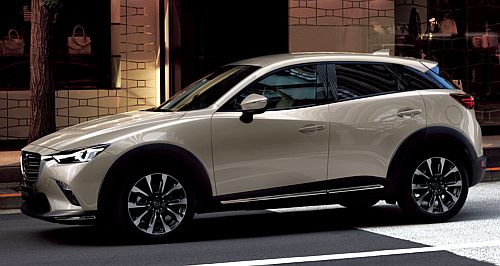Market Insight: Baby SUVs overtake car segment

THE light end of the SUV market overtook the equivalent baby category of passenger cars in Australia last year and despite only seeing one month of data for 2023, crossovers are already pushing little passenger cars further off the buyer shopping list.
It is the same trend that pushed SUVs to overtake passenger cars in 2017 and comes less than two years after the small SUV class leap-frogged the small passenger car segment.
A lot of onlookers will say that this is inevitable. SUVs are a genre that buyers want, triggered no longer by a sense of adventure or practicality – a small hatchback can be at least as space-efficient as a small SUV – but by a tribal sense of joining the fraternity on the road and the sheer weight of models available on the showroom floor.
Take the light SUV category. In January 2023, there were 10 players that sold almost 6000 units with sales that were up 44.8 per cent on January the previous year.
In January 2018, the same segment (light SUVs did not have a separate category then and were bunched with small SUVs) had 1818 sales from five players: Nissan Juke, Mazda CX-3, Suzuki Ignis, Ford EcoSport and Haval H2.
The light passenger car category (collectively micro and light segments) had 28 entrants that in January 2018 sold 7137 units.
So there was a clear disparity from the baby end of the SUV market and the equivalent passenger car segments, with the latter getting all the attention. This was primarily because there were more cars, so more choice and buyers gravitated to the small hatchbacks (and to a lesser degree sedans), a genre with which they had familiarity.
In the five calendar years from 2018 to 2022, medium-size SUV styling increasingly trickled down into the smaller vehicles.
The new design – in practice the same design as a hatchback but higher off the ground for better driver visibility and easier seat entry-exit – became the cookie-cutter shape that flowed right down to the light SUV class that was officially established in 2020.
Light SUV sales are led by the Mazda CX-3 (with the lion’s share 42.6 per cent of the segment) and newer entrants such as the Suzuki Ignis, Kia Stonic and Hyundai Venue.
Notable is that like a hatchback of the previous decade, most are front-wheel drive and have little to no off-road ability. The exception is the Suzuki Jimny, while Mazda’s CX-3 and Toyota’s Yaris Cross offer all-wheel drive as a $4000 and $3000 option respectively.
The silhouette also cemented itself in the small SUV segment, again effectively slightly larger hatchbacks and again with few having all-wheel drive or any off-road pretence.
Sales of small SUVs jumped the small passenger car class in 2021, with that year seeing the latter fall by 10 per cent and the former jump by 20 per cent. The effect was that in 2021, small SUVs outsold small cars by 35,206 units – a 24 per cent differential.
Much of the reason for the switch was the appearance of the budget-priced (and easily accessible) MG ZS, while new products attracted showroom interest in the form of the Volkswagen T-Roc, Skoda Kamiq and Jeep Compass.
Australian buyers, in concert with most markets, now prefer SUVs to all passenger-car variants with SUVs garnering almost 47,000 sales in January alone, compared with the traditional car segment with 16,602 units sold.